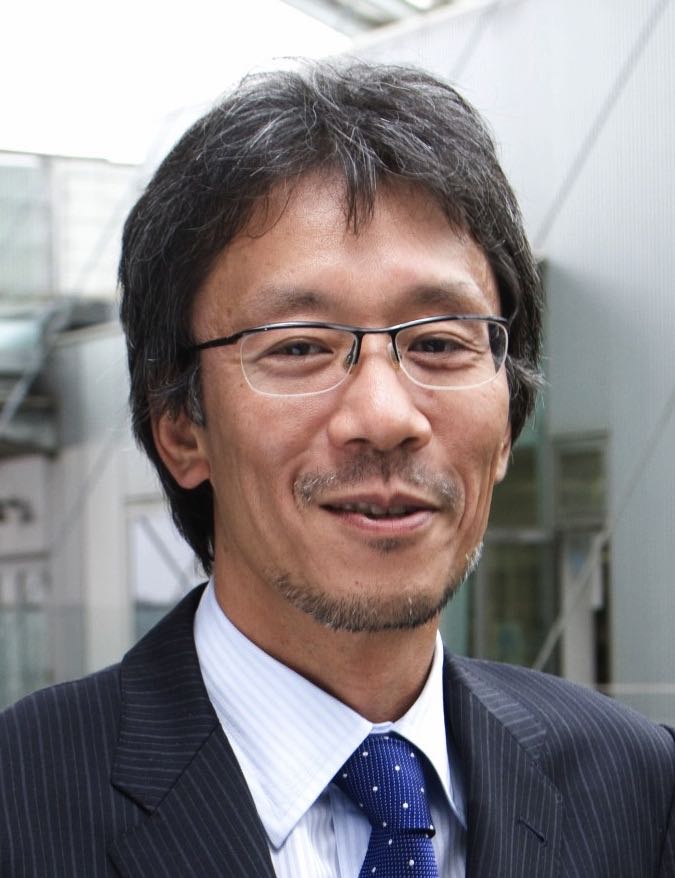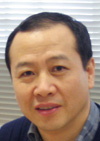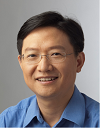Co-Located Conference AgendasGenomics Research Asia | Screening Asia |  Other Track Agendas Other Track AgendasLab-on-a-Chip Asia Track A | Lab-on-a-Chip Asia Track B |

Tuesday, 12 November 201308:00 | Registration | |
Plenary Session |
| | |
Chair: Charles Yang Chun, Associate Professor, Nanyang Technological University |
| | 08:30 |  | Conference Chair Welcome Speech: Design and Manufacturing of Microfluidics Devices
Zhiping Wang, Director, Singapore Institute Of Manufacturing Technology A''STAR, Singapore
|
| 09:15 |  | Keynote Presentation Lab-on-a-Chip Technologies – Pushing the Limit of Understanding
Teruo Fujii, Professor, University Of Tokyo, Japan
Lab-on-a-Chip or microfluidics technologies enable us to achieve much higher resolution in space and time for our experiments. By applying these technologies, we could push the limit of understanding in various research fields including biological and environmental sciences. |
| 10:00 | Coffee & Networking in Exhibition Hall | |
Session 1A |
| | |
Chair: Nicolas Szita, Senior Lecturer, University College London |
| | 10:30 | Microfluidic Devices Manufacturing - Sensing and Instrumentation Challenges and Opportunities
Brian Anthony, Director, Massachusetts Institute Of Technology, United States of America
In microfluidic device manufacturing precise micro and nano-sized features are distributed over large areas. In order to inspect for defects or employ statistical process control on micro-manufactured parts, metrological instruments must collect data with submicron resolution at a rate fast enough to keep up with the pace of production. Commercial inspection instruments fall short on meeting these challenging demands. New inspection systems are required which can provide real-time measurements of transparent polymer microfluidic devices. | 11:00 | Microfabrication for Electroporation
Zhihong Li, Professor, Peking University, China
Microfabrication enables electrodes with minimized spacing, which can be used for cell electroporation with lower applied voltage, lower cost and more precise control. In this talk, some major issues in microfabricated electroporation chips will be addressed. | 11:30 | Printed Electronics Integrated with Paper Based Microfluidics – New Methodologies for Next Generation Healthcare
Gareth Jenkins, Professor, Nanjing University of Posts and Telecommunications, China
New methods for fabricating low-cost, high-resolution, paper-based microfluidic devices are presented. Inkjet printing is used both for definition of high resolution microchannels via a unique hydrogel method and also for integrating printed electrochemical electrodes. | 12:00 | All Polymer Injection Molded Nanofluidic Devices with Nanoslits for High Quality at Low Cost Barcoding of Long Genome DNA
Rafael Taboryski, Professor, Technical University of Denmark, Denmark
We have demonstrated stretching of 1.2 Mbp DNA molecules in polymer nanofluidic chips fabricated by injection molding. The chips have a production time per chip and a unit price so low that they can be considered truly disposable. | 12:20 |  Technology Spotlight: Technology Spotlight:
Variation of Opportunities for More Accurate, Precise, & Smoother Microfluidic Channels and Chambers!
Harald Denz, MD & CEO,
z-microststems has been a tooling and injection molding company for 60 years. For the past 13 years we have been a reliable partner for our customers in the medical market. In this technology spotlight we give insights into thin channels, chambers and the variation of different thicknesses which we can manufacture in several forms, e.g. chips, cartridges, micro arrays with optical combination and so on. One of the main advantages is the roughness, smoothness and precision of nano- or Micro-structures with small tolerances to build up the insert and in injection molded parts too. We are ISO 9001:2008 and ISO 13485:2003 + AC:2007 certified. Processes : fluidic development ? prototyping ? pre-series ? series ? bonding ? coating
| 12:35 | Lunch & Networking in Exhibition Hall | 13:15 | Poster Viewing Session | |
Plenary Session |
| | |
Chair: Chwee Teck Lim, Principal Investigator/Professor, National University of Singapore |
| | 14:00 | | 14:45 |  | Keynote Presentation Using Phononic Crystals to Shape Complex Fluid Flows
Jon Cooper, Professor, University of Glasgow, United Kingdom
We have developed phononic crystals that shape acoustic fields as "acoustic holograms", enabling the control of fluid flows. We demonstrate the technology in biomedical diagnostics to enable PCR, cell lysis and sample manipulation - with applications in rapid diagnostic tests. |
| 15:30 | Coffee & Networking in Exhibition Hall | |
Session 2A |
| | |
Chair: Gareth Jenkins, Professor, Nanjing University of Posts and Telecommunications |
| | 16:00 | Capillary-Array Micro Analytical Devices as Mass-Producible Multi-Analyte Biosensing Tool
Hideaki Hisamoto, Professor, Osaka Prefecture University, Japan
Capillary-array microanalytical devices capable of mass-production and multiple chemical sensing of different chemical species were developed. Development of various capillary-based sensors, array devices, and some applications including serum component analysis or inhibitor assay will be presented. | 16:30 | Nanoplasmonics Enhanced Molecular and Cellular Imaging: “Chip” Solutions to Expensive Bioimaging Problems
Logan Liu, Associate Professor, University of Illinois at Urbana-Champaign, United States of America
Low-cost high-performance nanoplasmonic chips will be demonstrated to enable new capabilities and enhance sensitivity in label-free mobile biomolecular sensing and confocal fluorescence cell microscopy imaging. | 17:00 | Pathogen Growth Monitoring and Rapid Antibiotic Susceptibility Test on Nanoplasmonic Sensor for Point-of-Care Applications
Jack Sheng Kee, Scientist, Institute of Microelectronics, Singapore
We demonstrate pathogen growth monitoring and susceptibility testing using plasmonic nanohole sensor based on extraordinary optical transmission (EOT) phenomenon. The high sensitivity of the sensor enables rapid antibiotic susceptibility test on E. coli and produces detection results within 2 hours, which allows for the rapid AST detection in Point-of-care applications. | 17:20 | Implementation of a Neonatal Sepsis Study for Clinical Assessment of a Point-of-Care Diagnostic Tool - ASCMicroPlat.
Katherine McAllister, Research Scientist, Queens University Belfast, Ireland
Sepsis is a leading cause of infant death worldwide and there is market need for fast diagnostics. To address diagnostic short-comings, the ASCMicroPlat project is developing a point-of-care diagnostic device for neonatal sepsis using integrated microfluidic PCR assays for sepsis-biomarkers. | 17:40 | Close of Day One |
Wednesday, 13 November 2013 |
Plenary Session |
| | |
Chair: Zhiping Wang, Director, SIMTech Microfluidics Foundry, Singapore Institute of Manufacturing Technology |
| | 08:30 |  | Keynote Presentation Microfluidic Platforms, Microfluidic Apps and Microfluidic Foundry Services
Roland Zengerle, Professor, University of Freiburg, Germany
The talk promotes three major issues that enable to speed up Lab-on-a-Chip development and reduce time to market: i) the use of microfluidic platforms, ii) the development of Microfluidic Apps for existing lab instruments and iii) the offer of microfluidic design & foundry services. Various examples based on the use of centrifugal microfluidics platforms will be given to illustrate the impact of those issues especially for point-of-care applications. |
| 09:15 |  | Keynote Presentation Research into the Use of Optofluidics to Manipulate Light and Liquid
Ai Qun Liu, Professor, Nanyang Technological University, Singapore
There is significant research in the field of manipulation and sorting of small size particles and molecules with dimensions of tens to hundreds of nanometers in a microfluidic chip. Opto-fluidic-force aims to manipulate light and fluid at micro- and nano-scale and exploit their interaction to create highly versatile devices that have significant scientific interests in many areas. The novelties of the integrated opto-fluidic-force are two-fold. First, fluids can be used to carry substances for analysis in highly sensitive optical micro-devices. Second, fluids can also be exploited to control light, making them tunable, reconfigurable and adaptive. It is a new breakthrough research area that provides new solutions and opportunities for a wide range of traditional micro-/nano-particle and molecule sorting, manipulation and detection by using opto-fluidic-force manipulation. Also, this new innovation allows scientists and researchers to tackle many classical problems with new tools and new research ideas. In this talk, the state-of-the-art of opto-fluidic-force research is reviewed with breakthrough innovations in nano-particle and molecule sorting, manipulation and detection etc. and may lead to new applications in a single molecule sorting, maipulation and imaging. |
| 10:00 | Coffee & Networking in Exhibition Hall | |
Session 3A |
| | |
Chair: Aaron Ho, Professor, The Chinese University of Hong Kong |
| | 10:30 | Micro Device for Measuring Cell Function and for Tissue Engineering
Hidetoshi Kotera, Professor, Kyoto University, Japan
In the field of re-generative medicine, understanding the function of cell and tissue is key issue. To understand the cell and tissue functions, many micro devices, called Micro TAS( Total analysis systems) are proposed and used in the field of medicine and life science research.For studying the function of the pancreas islet we have developed two types of novel microfluidic device for space- and time-resolved visualization of intracellular events when a cell surface is partially exposed to external stimuli. | 11:00 | Microfluidics for Cancer Detection and Diagnosis
Chwee Teck Lim, NUS Society Chair Professor, Department of Biomedical Engineering, Institute for Health Innovation & Technology (iHealthtech), Mechanobiology Institute, National University of Singapore, Singapore
We present a suite of microfluidic biochips that are able to detect and retrieve rare viable circulating tumor cells from blood of cancer patients without using antibodies. These biochips have been commercialized and are undergoing clinical tests around the world. | 11:30 | Single Cell Genetic Testing with Integrated Sample Preparation in the Same Reaction Wells
Thomas Hai-Qing Gong, Associate Professor, Nanyang Technological University, Singapore
We developed a novel microfluidic method to integrate the entire workflow of single cell genetic analysis, including single cell capture, zero-loss nucleic
acid extraction and purification from low copy cells (1-105 cfu) in a microwell
and furthermore perform single cell real-time PCR in the same microwell. All these steps are carried out in a single well, avoiding sample loss during sample transfer. We further applied this “all-in-one-well” sample prep integrated PCR to an array of
nanoliter wells for single cells dPCR analysis. This sample prep integrated genetic testing method also has a potential to carry out dPCR using a raw sample with zero loss of nucleic acid when removing PCR inhibitors. It also has benefits of reducing the total raw sample volume to 1ul or less, and selectively removing DNA or RNA to enable high quality gene expression analysis.
| 12:00 | "PASCA's" Single Cell Manipulation Technology - A Powerful New Tool in Cancer Diagnostics and Therapeutics
Victoria McEneaney, Post Doctoral Researcher, Trinity College Dublin, Ireland
The EU funded "Platform for Advanced Single Cell Analysis - PASCA" project has developed a new Single Cell Manipulator (SCM) automated "drop on demand" instrument, capable of printing single cells within a picolitre sized droplet into spatially ordered arrays or onto a chosen substrate. This technology is a powerful new tool that will offer new insights in clinical diagnostics and therapeutics. | 12:20 | Lunch & Networking in Exhibition Hall | 13:15 | Poster Viewing Session | |
Plenary Session |
| | |
Chair: Noritada Kaji, Associate Professor, Nagoya University |
| | 14:00 |  | Keynote Presentation Interface Structures and Functions for Organs-on-Chip
Hanry Yu, Group Leader, Institute of Bioengineering and Nanotechnology A*STAR, Singapore
Organs are not defined only by a group of cells but also the distinct interface structures carrying out specific functions. We will discuss technologies to create, control and preserve these interface structures for Organs-on-Chip. |
| 14:45 |  | Keynote Presentation Commercialization of Microfluidic Devices for Point-of-Care Diagnostics
Vincent Linder, CTO, OPKO Diagnostics, United States of America
Microfluidics is a key component to designing devices for high-performance in-vitro diagnostics tests outside the laboratory. The presentation will focus on generally applicable design rules for such devices, and a discussion of how these rules were successfully applied to the design of the Claros1TM device. The presentation will focus on the interface between microfluidics and usability, robustness (for manufacturing), cost competitiveness and clinical performance from trials. |
| |
Chair: Logan Liu, Assistant Professor, University of Illinois |
| | 15:30 | Coffee and Networking in Exhibition Hall | |
Session 4A |
| | 16:00 | Nanobiodevices-Based Single Biomolecule and Single Cell Analysis for Cancer Diagnosis/Therapy and Stem Cell Therapy
Noritada Kaji, Associate Professor, Nagoya University, Japan
I will describe the development of nanobiodevices to apply to CTC detection for cancer metastasis diagnosis, nanobiodevice for single DNA sequencing, single molecular epigenetic analysis, in vivo imaging for stem cell therapy and theranostic device for cancer diagnosis/therapy. | 16:30 | Microbioreactors for Stem Cell Bioprocessing
Nicolas Szita, Professor, University College London, United Kingdom
We present a novel, autoclavable, and microfabricated scale-down device designed for regenerative medicine process development. The microfabricated device contains a re-sealable culture chamber that facilitates use of standard culture protocols, creating a link with traditional small-scale culture devices for validation and scale-up studies. An image processing algorithm was developed which permits quantification of co-cultured colony-forming cells from phase contrast microscope images.
| 17:00 | An Integrated Platform Enabling Theranostic Applications at the Point of Primary Care (TheraEDGE)
Antoni Homs i Corbera, Senior Researcher, Institute for Bioengineering of Catalonia, Spain
A commercially feasible diagnostics system, based on single use disposable LOC cartridges and their associated diagnostic device, has been prototyped. All bioassay steps have been properly integrated in a single cartridge and tested. Multiple pathogens analysis time estimation is 40 minutes. | 17:20 | Application of a Microfluidic Chip-based 3D Co-culture to Test Drug Sensitivity for Individualized Treatment of Lung Cancer
Qi Wang, professor, Dalian Medical University, China
Individualized treatment is a promising clinical strategy for lung cancer, and drug sensitivity testing is fundamental to this scheme. We aimed to develop an effective drug sensitivity test platform to support individualized treatment. | 17:40 | Close of Conference |
|


 Add to Calendar ▼2013-11-12 00:00:002013-11-13 00:00:00Europe/LondonLab-on-a-Chip Asia Track ASELECTBIOenquiries@selectbiosciences.com
Add to Calendar ▼2013-11-12 00:00:002013-11-13 00:00:00Europe/LondonLab-on-a-Chip Asia Track ASELECTBIOenquiries@selectbiosciences.com